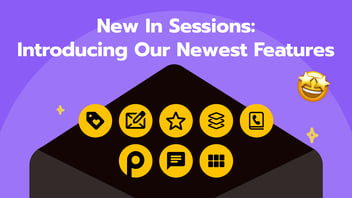
Meetings can be incredibly tedious, especially when run by people who enjoy them. The popular belief is that people who enjoy meetings should not be in charge of anything, and it isn’t hard to imagine why. All too often, meetings are clunky, inefficient, and long, and they aren’t just frustrating for participants — they create inefficiencies for the business. They slow down work, making you lose your productive mojo and start looking at your phone or giving in to distractions. They lead to workplace resentment or even hostility (the “not-so-gentle” reminders). And yet, you can’t do business without them. So what is it about meetings that keeps us coming back, even when they’re not always enjoyable?

Perhaps it’s the potential for productive conversations and the exchange of new ideas. Or maybe it’s the simple fact that they provide a chance for us to connect with other people. Whatever the reason, our relationship with meetings has always been complex and nuanced. And it doesn’t seem like that will be changing anytime soon. In this article, we’ll unearth the psychology behind why people get so frustrated with business meetings and how you can avoid these pitfalls to make sessions more productive using an all-in-one customer success platform for client-facing interactions, Sessions.
1. “Meetings lead NOWHERE”
The longer it takes to reach a consensus, the less likely it becomes that a person will remember and implement the final decision. In fact, consensus building is best done before or after meetings, not during. With Sessions, you can automatically send the meeting’s notes to clients after meetings, so they have enough time to ponder the offer and make up their minds.
2. “Meetings are for people who don’t have to do the work”
It is okay to attend a meeting as long as it directly impacts your job; however, if you belong to several committees, you should be selective when deciding which sessions to attend. With Breakout Rooms, you can facilitate group interactions while still allowing for focused attention on specific topic areas.
3. “Most meetings can be summarized in an e-mail”
They can be and should be, for people who are unable to attend, those who only attend relevant meeting sections, and those reviewing suitable materials beforehand. Sessions allow you to send the agenda prior to the session, so people can make thoughtful contributions to what is being discussed.
4. “Meetings suffer from poor communication”
There are a few primary reasons why communication often breaks down during meetings. Some people tend to multitask when they should focus on the discussion. Other people may not feel comfortable speaking up in front of a group, so they remain silent. By assigning moderators and roles in a session, you ensure that each contribution is valued and people are encouraged to speak up.
5. “Meetings are repetitive”
Some may say that not all meetings are created equal, but how true is this affirmation? With Sessions, repetition can be seen as an advantage in business rather than a burden. Sessions considerably reduces the time you spend preparing for a meeting and improves your chances of getting a sale by allowing you to create pre-built templates for your client-facing interactions.
Ultimately, meetings are less painful when they meet the needs of participants and provide value.
While a lot of valuable content can be discussed during sessions, keeping interactions short and focused is essential. To ensure you get the most out of your time, break up your sessions into shorter 30-minute segments.This allows clients to focus more effectively and retain more information. No matter how interested a client is, there’s no need for a session to last forever.
If you are interested in personalized session templates and other productivity tools for your clients, you can request a Demo of Sessions here. We may be meeting with you, but don’t worry–we’ll ensure it’s productive.




Comment on this post